Searching from the UI
Full Text Search can be performed from the Couchbase Web Console.
Access the Full Text Search User Interface
The user interface for Full Text Search is provided by the Couchbase Web Console. In order to proceed, you must have permission to log into the console, create indexes, and perform searches. For information on Role-Based Access Control, see Authorization.
The example provided in this section assumes that you have also loaded the travel-sample bucket: you will perform your Full Text Search operations on the data in this bucket.
For instructions on how to load this sample bucket, see Sample Buckets.
Once you have the appropriate credentials, and have loaded the travel-sample bucket, access the Couchbase Web Console by typing http://<server_name>:8091 into the address-field at the top of your browser, and then hitting return.
The login screen appears as follows:
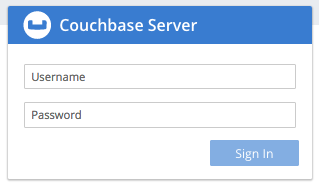
Enter your username and password, and left-click on the Sign In button. The Couchbase Web Console now appears, with the Dashboard for the cluster displayed:
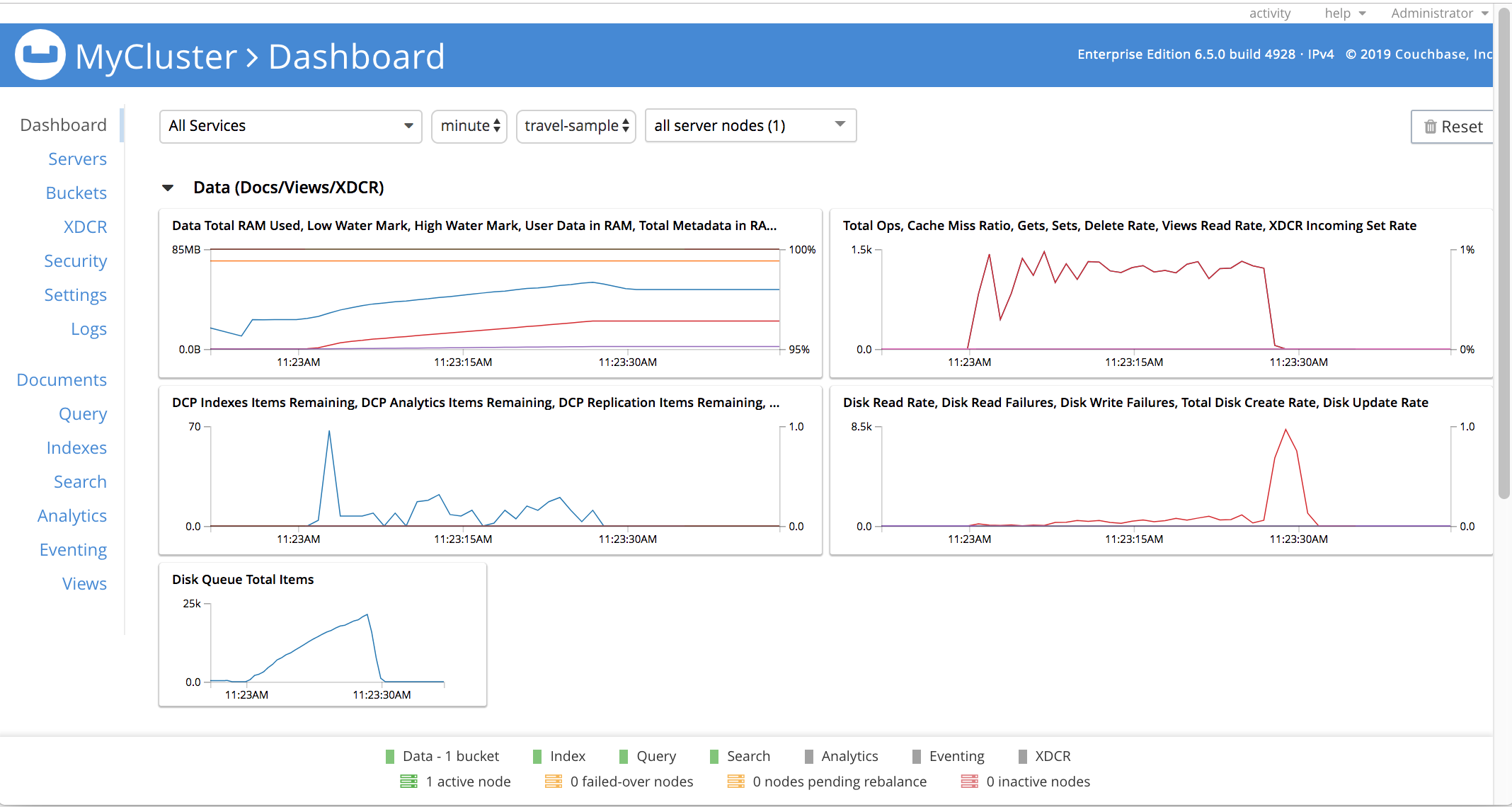
Note that the appearance of the main panel of the Dashboard varies, in accordance with customizations that have been performed. For information, see Manage Statistics.
To access the Full Text Search screen, left-click on the Search tab, in the navigation bar at the left-hand side:

The Full Text Search screen now appears, as follows:
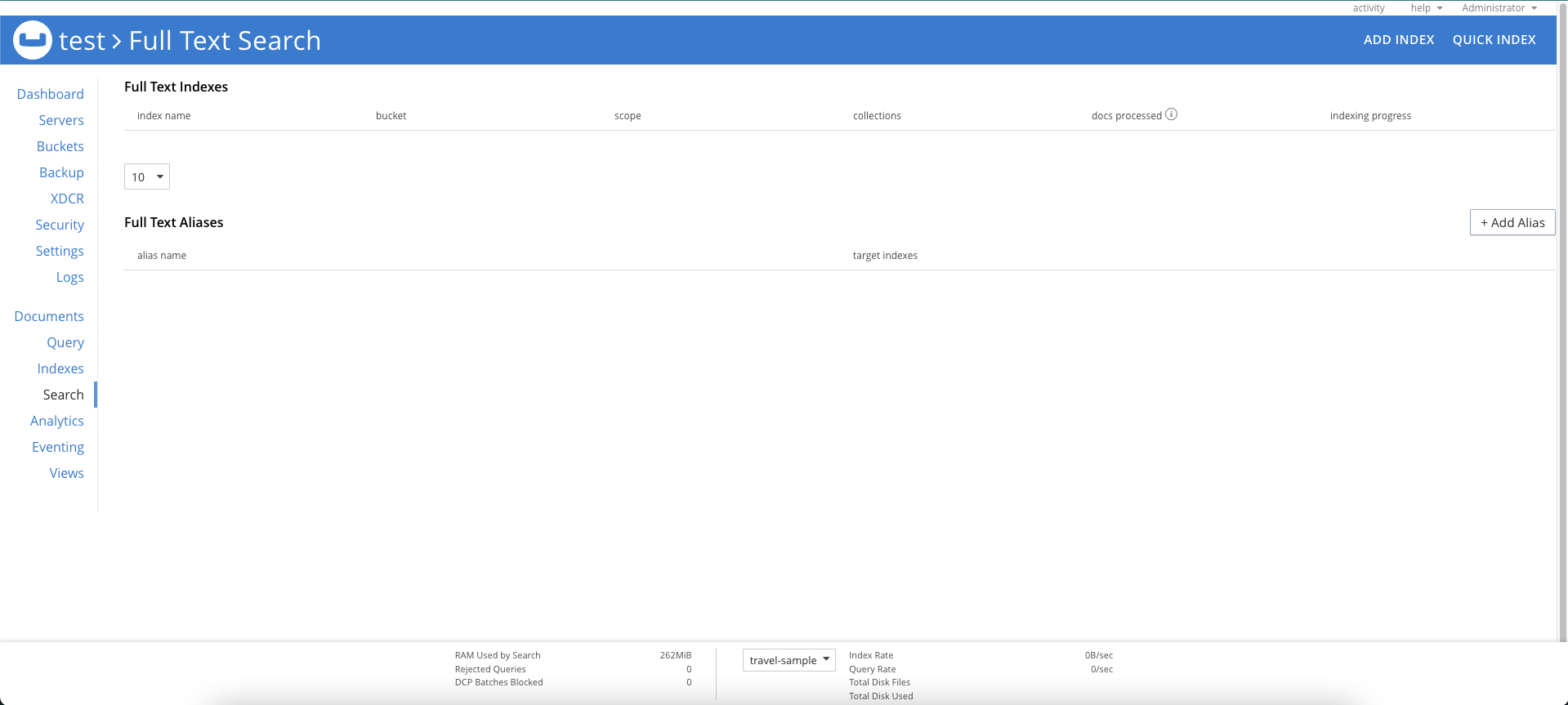
The console contains areas for the display of indexes and aliases: but both are empty, since none has yet been created.
Perform a Query
To perform a query, simply type a term into the interactive text-field that appears to the left of the Search button on the row for the index you have created.
For example, restaurant.
Then, left-click on the Search button:

A Search Results page now appears, featuring documents that contain the specified term:

By left-clicking on any of the displayed document IDs, you bring up a display that features the entire contents of the document.
Advanced Settings and Other Features
On the Search Results page, to the immediate right of the Search button, at the top of the screen, appears the show advanced query settings checkbox. Check this to display the advanced settings:
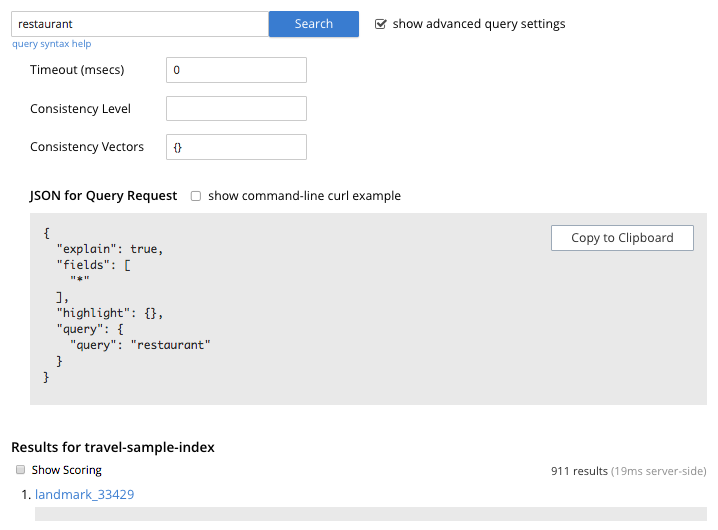
Three interactive text-fields now appear underneath the Search panel: Timeout (msecs), Consistency Level, and Consistency Vector. Additionally, the JSON for Query Request panel displays the submitted query in JSON format. Note the show command-line curl example checbox, which when checked, adds to the initial JSON display, to form a completed curl command:
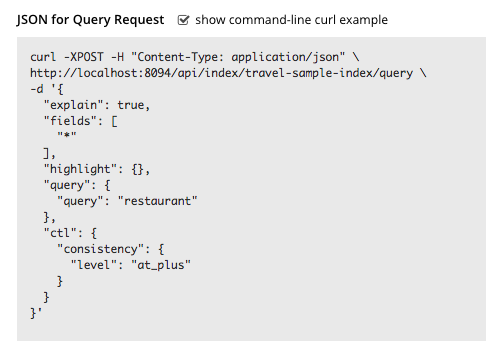
This example can be copied by means of the Copy to Clipboard button, pasted (for example) into a standard console-window, and executed against the prompt. This feature therefore provides a useful means of extending experiments initially performed with the UI into a subsequent console-based, script-based, or program-based context. (Note, however, that the addition of credentials for authentication are required for execution of the statement outside the context of the current session within Couchbase Web Console. See Searching with the REST API for an example.)
Note also the Show Scoring checkbox that appears prior to the entries in the Results for travel-sample-index panel. When this is checked, scores for each document in the list are provided. For example:
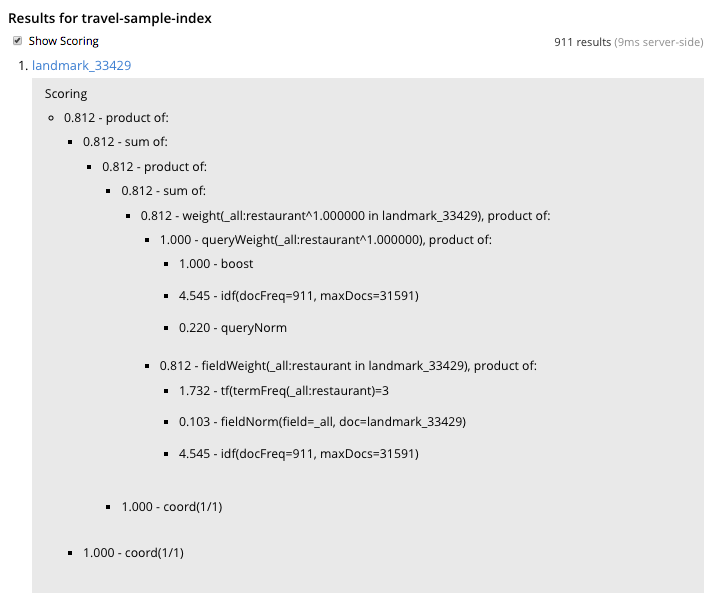
Finally, note the query syntax help link that now appears under the Search interactive text-field:

This link takes the user to the documentation on Supported Queries. Such a query can be specified in the Search interactive text-field, thereby allowing a search of considerable complexity to be accomplished within Couchbase Web Console.
| Query String Query is the only type of query that can be executed by means of this field. |